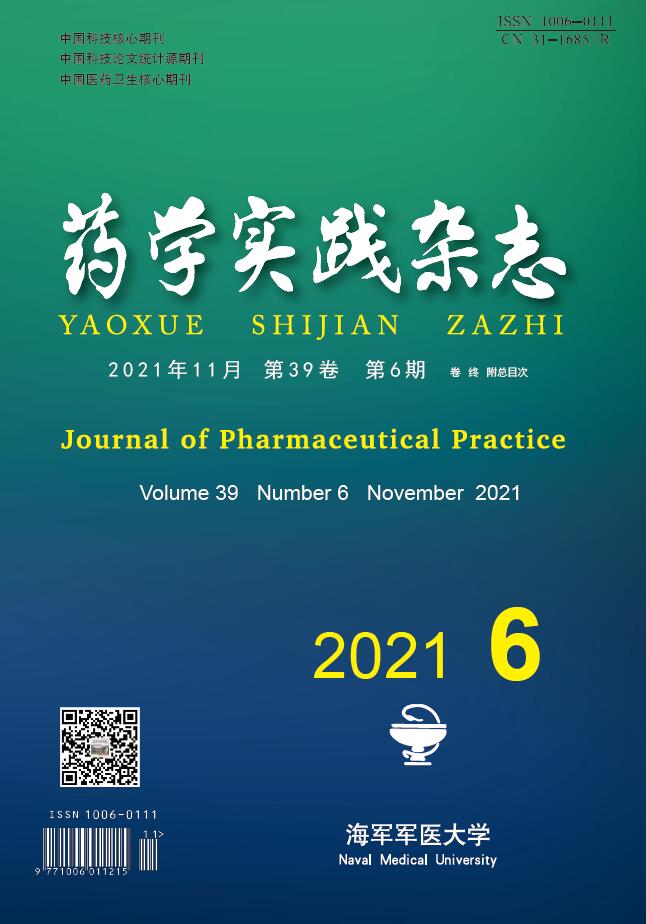-
脓毒症是因感染反应失调而导致的危及生命的器官功能障碍,其发病率和死亡率很高。根据柳叶刀杂志最新报道,2017年全球记录的脓毒症病例为4890万例,与脓毒症相关的死亡为1100万例,约占全球所有死亡病例的20%[1]。发达国家如美国每年脓毒症病例约为170万例,与脓毒症相关的死亡约27万例[2]。在低收入及中等收入的国家,脓毒症更是重症监护病房(ICU)患者的主要死亡原因,死亡率高达80%[3]。世界卫生组织已经认识到脓毒症对全球健康的重大威胁,并加强了对脓毒症的预防、诊断和治疗[4]。尽管如此,脓毒症的死亡率依然很高,主要原因之一是目前并没有诊断脓毒症的金标准,临床缺乏早期诊断和病情预测的手段。传统的标准微生物培养方法非常耗时,且有相当比例的假阴性结果。降钙素原(PCT)是唯一写进临床指南的脓毒症标志物,可用于指导抗生素的使用,但并不具有独立诊断的能力。C反应蛋白(CRP)作为传统的炎性指标,其诊断特异性较差。为了给临床提供准确及时的诊断及预后标准,脓毒症标志物一直是研究热点。本文对近年来关注度较高的、新的脓毒症候选生物标志物进行了综述,主要包括急性期蛋白、可溶性受体、非编码RNA和其他候选标志物。
-
PTX-3作为正五聚蛋白(pentraxins,PTX)长五肽亚家族的一员,由脂多糖(LPS)等微生物成分或炎性细胞因子刺激分泌,可以参与髓系细胞对病原体的识别,通过产生抗微生物微环境发挥抵抗作用[5]。
PTX-3的产生不依赖肝脏,在反映快速炎症过程方面优于传统的生物标志物。多项研究已经证明其较好的诊断价值[6-8],认为其诊断能力并不弱于PCT和CRP 。
PTX-3还被认为可以作为脓毒症的预后标志物,既是28 d死亡率的独立相关因素[9],也可以预测脓毒症休克[10]。除此之外,Hu等[11]的研究认为PTX-3(AUC=0.78)在预测28 d死亡率方面优于PCT和乳酸,并提出将PTX-3、PCT和乳酸作为一组标志物能更好的预测死亡率(AUC=0.90,95%CI 0.83~0.94),这也为多种生物标志物的联合应用指明了方向。
-
肾上腺髓质素(ADM)来源于更大的前体肽(Pro-ADM),MR-proADM是其活性形式。LPS、细胞因子和缺氧刺激导致的感染会促进ADM的合成和分泌。在脓毒症过程中,ADM既可以通过cAMP介导血管扩张作用,也具有稳定内皮屏障和抗菌抗炎的作用。在脓毒症休克时ADM水平可上升20~30倍。脓毒症患者初诊ADM浓度升高与血管活性药物需求增加、器官衰竭恶化和死亡率增加有关。值得注意的是,内源性ADM水平在高血压、缺血、内分泌和代谢紊乱等情况下也会增加。
有研究表明,在贯序器官衰竭评估(SOFA)评分阴性的情况下,MR-proADM同样具有重要的诊断意义,且与器官衰竭和28 d死亡率显著相关[12-13]。值得注意的是,Buendgens等[14]发现了ADM在长达26个月的随访中仍具有死亡率预测价值。
Daga等[15]发现女性脓毒症患者血清ADM水平升高更为明显,且女性患者的死亡率更低,认为主要原因是ADM发挥了作为神经激素的正面保护作用。而后Ajith[16]对此文章发表了评论,虽然肯定了初诊ADM水平对血管活性药物需求、恶化的器官功能障碍和死亡率的预测能力,但ADM与脓毒症的利害关系尚需继续研究。有趣的是Daga等[17]也对此评论做出了回复,进一步解释并坚持其原有看法。
-
CD14是单核细胞和巨噬细胞等免疫细胞表面的LPS受体,Presepsin是机体感染后产生的可溶性CD14亚型。多项研究已经表明Presepsin具有诊断脓毒症的能力[18],但关于Presepsin对预后的预测能力尚有争议。有研究称Presepsin与免疫功能低下的脓毒症患者的预后相关,而PCT与不良预后无明显相关性,究其原因,可能是生物标志物产生机制的不同,PCT是由LPS和某些细胞因子诱导的,而Presepsin的产生则并不依赖LPS和细胞因子,这也解释了一些研究者发现Presepsin在小鼠盲肠结扎穿孔(CLP)模型中升高,而在LPS模型中无明显变化[19]。有趣的是,Kaplan等[20]提出Presepsin与白蛋白的比值具有更好的脓毒症预后的预测能力。在预测脓毒症并发症方面,除了脓毒症休克, Presepsin还可预测脓毒症急性肾损伤、急性呼吸窘迫综合征、弥散性血管内凝血[21]。另外,Presepsin是革兰阴性菌细胞壁中LPS的受体之一,全血与细菌共培养结果表明革兰阴性菌诱导的Presepsin水平高于革兰阳性菌,说明Presepsin具有鉴别细菌感染种类的潜能[22]。
-
髓样细胞触发受体-1(TREM-1)表达于髓系细胞表面,在细菌和真菌感染时表达显著增加,具有炎症放大器的作用。sTREM-1作为TREM-1的可溶性形式,可以代表TREM-1的激活情况,被认为是脓毒症的诊断和预测的候选生物标志物。
多项研究认为sTREM-1具有诊断脓毒症的作用,但诊断能力仍有争议[23-24]。荟萃分析显示sTREM-1对脓毒症的诊断能力中等,需要更多的大规模研究来进一步评估sTREM-1的诊断准确性[25]。除此之外,sTREM-1还被发现表达于内皮细胞和血小板,在非感染性炎症中以及心血管手术后甚至非病理状态下也会升高[26]。因此,血浆sTREM-1作为脓毒症诊断标志物仍需继续研究。
sTREM-1作为脓毒症的预后标志物似乎更有希望,Gibot等[27]认为sTREM-1是与预后相关的独立因素。多项研究描述了类似的结果,并且Zhang等[28]认为血清sTREM-1浓度比CRP和PCT更准确地反映脓毒症的严重程度,对脓毒症预后的动态评估更敏感。Charles等[29]的一篇高质量研究也提供了有力证据,认为与PCT和CD64相比,sTREM-1是更为理想的预后标志物。
-
尿激酶型纤溶酶原激活物受体(uPAR)是尿激酶型纤溶酶原激活物的膜结合型受体。SuPAR是其可溶性形式,广泛存在于体液中。当身体处于炎症或其他疾病状态时,激活的免疫细胞尤其是中性粒细胞使SuPAR水平显著上调,其浓度与免疫系统活动呈正相关[30]。
在鉴别脓毒症和全身炎症反应综合征(SIRS)方面,SuPAR表现出了比PCT更好的鉴别能力(AUC 0.89 vs 0.82),但在预测脓毒症患者死亡率方面PCT更具优势[31]。
SuPAR的预后价值研究更为广泛。希腊的脓毒症研究小组在2020年报道,SuPAR<4 ng/ml被认为可以安全出院,SuPAR>6 ng/ml是不良结果的警示信号,SuPAR>12 ng/ml的患者28 d死亡率在17%~50%[32]。一项法国学者[33]的前瞻性、多中心的国际研究表明,SuPAR联合可溶性血管内皮生长因子受体-2(sVEGFR2)对早期病情恶化有较好的预测能力(AUC=0.70)。Pregernig等[34]的一项纳入44项研究的荟萃分析肯定了SuPAR预测死亡率的作用,得出临界值为5.2 ng/ml (95% CI 4.5~6.0,P<0.01)。2020年的一篇综述,系统地回顾分析了SuPAR的脓毒症诊断和预后价值,共纳入30项研究的6906名患者,认为SuPAR具有诊断脓毒症(AUC=0.83)、预测死亡率(AUC=0.78)以及鉴别脓毒症与SIRS的作用(AUC=0.81)。与以往Meta分析确定的PCT有效性相比,SuPAR具有相似的临床指导价值,但SuPAR表现出更高的特异性,有助于弥补PCT的不足[30]。
-
miRNA是由20到24个核苷酸组成的非编码RNA,可与靶mRNA结合减少蛋白质表达甚至导致转录沉默。在应激条件下,miRNAs可通过对多个靶标的协同效应来改变细胞反应,精细调节基因表达的模式[35]。近年来陆续有学者发现了miRNAs的脓毒症诊断和预测作用。
在诊断方面,miR-16a作为新生儿败血症的诊断标志物,可抑制IL-6和TNF-α等促炎因子的mRNA表达,并促进IL-10等抗炎因子mRNA表达[36]。miR-328也表现出了较好的诊断潜能(AUC=0.926),抑制miR-328的表达水平可以改善脓毒症患者的心功能障碍和心脏炎症[37]。Hermann等[38]的研究表明,miR-193a-5p和miR-542-3p可用于鉴别非感染性疾病和感染性疾病(社区获得性肺炎或脓毒症),miR-1246的表达水平随着疾病严重程度的增加而发生显著变化,从而鉴别健康人群、社区获得性肺炎和脓毒症。
在预测方面,循环miR-10a水平可以区分脓毒症和感染,并预测28 d的死亡率。脓毒症患者miR-223的表达与APACHE II评分(P<0.001,r=0.526)和SOFA评分(P<0.001,r=0.390)呈正相关。脓毒症患者外周血单个核细胞miR-10a水平降低,且与病情严重程度呈负相关[39]。另外,在28 d内死亡的患者中,miR-223的表达高于28 d的幸存者[40]。
此外,miRNAs在预测脓毒症并发急性肾损伤方面具有独特作用。脓毒症患者其血、尿miR-22-3p水平都会降低,可预测急性肾损伤和28 d生存率[41]。血清 miR-21-3p联合实验室指标对脓毒症并发急性肾损伤具有较高的预测价值(AUC=0.962) [42]。
Chen等[43]综述了miR-155与脓毒症的相关性,对比多项研究,肯定了循环miR-155作为诊断标志物和预后标志物的作用,但入院后48 h循环miR-155明显下降,表明miR-155的上调仅存在于脓毒症早期。需要注意的是,Link等[44]提出了不同意见,在对miR-26b-5p、miR-122-5p、miR-143-3p、miR-146a-5p、miR-193-3p、miR-223-3p研究之后,并没有发现独立的miRNAs能够明确区分脓毒症和非脓毒症ICU患者,认为miRNAs的诊断能力并不优于现行评分系统。
-
lncRNA是一类超过200个核苷酸的RNA,通过调控靶基因的表达广泛参与细胞的增殖、分化和凋亡[42]。有结果显示脓毒症患者的血浆中多种lncRNA表达增加至28~70倍,单纯的LPS诱导也有相同的结果[45]。
lncRNA肺腺癌转移相关转录因子1( MALAT1)已被证明通过抑制NF-кB活性来调节LPS刺激的促炎细胞因子TNF-α和IL-6的表达[46]。一项对120名脓毒症患者进行的前瞻性队列研究显示,lncRNA MALAT1具有诊断脓毒症的价值(AUC=0.910),对脓毒症休克和死亡率也有较好的预测能力[47]。 lncRNA锌指蛋白反义链1(zinc finger antisense 1,ZFAS1)被认为与类风湿性关节炎和急性心肌梗死等炎症性疾病有关,Xu等[48]发现lncRNA ZFAS1对脓毒症也有较好的诊断(AUC=0.814)和预测死亡率(AUC=0.628)的能力。
其余lncRNA 多在预后方面起预测作用。lncRNA富含丰富的转录本1 (nuclear-enriched abundant trans-cript 1,NEAT1)是核体类斑点结构的重要组成部分,调节IL-8等抗病毒基因的表达,在先天免疫反应中发挥重要作用。脓毒症患者中lncRNA NEAT1水平的升高与APACHE II和SOFA评分呈正相关,并与不良预后相关[49-50]。lnc母系表达基因3 (maternally expressed gene 3 ,MEG3)的水平也与炎症反应和器官损伤程度正相关,通过作为多种miRNAs的分子海绵即长效竞争性抑制剂发挥作用,如miR-21。近期一项纳入219名脓毒症患者和219名健康对照者的研究中,对入院后24 h内采集的血浆样本中lnc-MEG3和miR-21含量进行分析,发现lnc-MEG3(AUC=0.887)和lnc-MEG3/miR-21比值(AUC=0.934)对预测脓毒症风险升高有较好的预测价值,而miR-21(AUC=0.801)对脓毒症风险降低有较好的预测价值[51]。与之相反,脓毒症患者lncRNA牛磺酸上调基因1 (taurine up-regulated 1,TUG1)的表达与急性生理与慢性健康评分(APACHE II)和序贯器官衰竭评分(SOFA)呈负相关,28 d死亡组的lncRNA TUG1表达低于28 d存活组[40]。
-
钙保护素是一种异源二聚体钙结合蛋白,高表达于髓系细胞的胞浆中。近期的两项研究[52-53]都认为钙保护素对脓毒症有较好的诊断效能。有趣的是,Wirtz等[54]提出初诊钙保护素高水平可能与死亡风险相关,而入院后钙保护素水平的升高则与长期良好结局相关。
-
nCD64又称高亲和力Fcγ受体I,在中性粒细胞中静息状态下水平很低,在感染过程中被炎性因子上调。近期一篇纳入133名患者的研究[55]表明,nCD64对诊断新生儿脓毒症的敏感度为94.7%,特异度为93.6%,AUC值为0.925。Hashem等[56]关于诊断作用也得出了类似的结论(AUC=0.922)。我国学者2020年的一项研究[57]同样表明nCD64在诊断和预测死亡率方面均优于PCT。
-
肠道是所有人体部位中微生物分布最密集和异质性最强的部位,肠道微生物群被认为是糖尿病、肝硬化、癌症和动脉粥样硬化等疾病发生发展的生物标志物。脓毒症会损害肠道微生物群的完整性,肠道微生物群也会影响脓毒症和器官衰竭的进程。根据El MEHS等[58]的报道,肠道微生物群检测可在发病前1天预测迟发性脓毒症的发生(AUC=0.78)。Agudelo等[59]发现脓毒症患者的肠道微生物群特征为副杆菌属、梭杆菌属和嗜血杆菌属等炎症相关微生物的增加,认为其可以预测脓毒症的发展,尤其是肠球菌种类的丰富度可能是脓毒症潜在的预后生物标志物。遗憾的是,近期的一项纳入150名患者的前瞻性队列研究[60]表明微生物多样性降低与死亡率的增加无关。而且饮食、抗生素和其他治疗手段都会引起肠道微生物群的变化,肠道微生物群作为脓毒症的生物标志物前景并不乐观。
-
血管生成素(Angpt)是血管生成生长因子家族中的一员,由血管内皮细胞在炎症等应激条件下分泌。Angpt-1发挥稳定血管内皮和抗炎的正面作用,而Angpt-2对Angpt-1产生竞争性拮抗作用[61]。Angpt-2可能具有预测脓毒症休克的能力(AUC=0.631)[10]。Angpt-2/Angpt-1的比值也具有预测作用,据韩国的一项报道[62],Angpt-2/1预测28 d死亡率的能力与SOFA评分无显著差异(AUC 0.736 vs 0.745 )。
-
本文综述的急性期蛋白、可溶性受体、非编码RNA和其他的标志物的作用及效能如表1所示。早期诊断和正确治疗是降低脓毒症病死率的关键。但由于脓毒症病理生理机制复杂,个体差异较大,体征和症状无特异性,早期诊断极为困难。目前被研究的诊断标志物主要参与先天免疫反应的初始发病机制,预后标志物通常与脓毒症引起的器官功能障碍有关。这些候选标志物在脓毒症发病机制中的作用以及最佳联合使用策略,都需要进一步的研究,以供将来的临床使用。
分类 标志物 作用 效能 参考文献 AUC 临界值 敏感性(%) 特异性(%) 急性期蛋白 PTX-3 诊断新生儿脓毒症 0.875 ? 100 94.3 [6] 诊断新生儿脓毒症 0.995 5.6 μg/L 98.3 96.7 [7] 预测28天死亡率 0.69 ? ? ? [9] 预测脓毒症休克 0.798 15877 pg/ml 50 100 [10] 预测28天死亡率 0.78 49.9 ng/ml 83.3 64.2 [11] ADM 诊断脓毒症 0.85 1.5 pg/ml 83 76.47 [12] 预测器官衰竭 0.69 75 pg/ml ? ? [13] 诊断脓毒症 0.731 ? ? ? [14] 预测总死亡率 0.655 1.4 nmol/L 81.1 39.8 可溶性受体 Presepsin 诊断脓毒症 0.792 380 pg/ml 83.5 62.2 [18] 预测30天死亡率 0.683 556 pg/ml 73.1 59.6 诊断免疫功能低下患者的脓毒症 0.87 1248 pg/ml 66 100 [19] sTREM-1 诊断脓毒症 0.97 60 ng/ml 96 89 [25] 诊断脓毒症 0.868 108.9 pg/ml 83 81 [26] 预测脓毒症死亡率 0.74 180 pg/ml 86 70 [29] 预测脓毒症休克 0.823 222.5 pg/ml 59.5 93.3 [30] 预测脓毒症死亡率 0.64 954.4 pg/ml 54.5 78 [31] SuPAR 诊断脓毒症 0.89 5.58 pg/ml 96 72.2 [33] 预测脓毒症病情恶化 0.66 ? 90 20 [35] 预测脓毒症死亡率 ? 5.2 ng/ml ? ? [36] 诊断脓毒症 0.83 7.5 pg/ml 76 78 [32] 预测死亡率 0.78 9.6 pg/ml 74 70 鉴别脓毒症与CIRS 0.81 7.5 pg/ml 67 82 MicroRNA miRNA-16a 诊断新生儿脓毒症 0.968 3.164 88 98 [36] miR-328 诊断脓毒症 0.926 0.305 87.6 86.36 [37] miR-10a 诊断脓毒症 0.804 0.18 65 85.7 [39] 预测28天死亡率 0.699 ? ? ? miR-223 诊断脓毒症 0.924 ? ? ? [40] 预测28天死亡率 0.711 ? ? ? miR-21-3p 预测脓毒症并发急性肾损伤 0.962 ? 97 91.4 [42] lncRNA lncRNA MALAT1 诊断脓毒症 0.91 1.895 83.33 85 [47] 预测脓毒症休克 0.836 3.665 70.37 92.42 预测脓毒症死亡率 0.886 3.62 81.82 89.47 lncRNA ZFAS1 诊断脓毒症 0.814 ? 92.1 63.5 [48] 预测脓毒症死亡率 0.628 ? 92.1 35.5 lncRNA NEAT1 诊断脓毒症 0.785 ? ? ? [49] 预测28天死亡率 0.726 ? ? ? lnc-MEG3 诊断脓毒症 0.887 ? ? ? [51] 预测28天死亡率 0.704 ? ? ? lncRNA TUG1 诊断脓毒症 0.846 ? ? ? [40] 预测28天死亡率 0.705 ? ? ? 其他 Calprotectin 诊断脓毒症 0.79 1.3 ng/l 81 56 [52] 诊断脓毒症 0.91 ? ? ? [53] nCD64 诊断新生儿脓毒症 0.925 41.60% 94.7 93.6 [55] 诊断脓毒症 0.879 8 MFI 75 89.4 [56] 预测28天死亡率 0.85 5.45 MFI 93.3 65.3 诊断脓毒症 0.922 43% 85.6 93 [57] 肠道微生物群 诊断迟发性脓毒症 0.78 ? ? ? [58] Angiopoietin 2 预测脓毒症休克 0.631 9047 pg/ml 42.31 88.24 [61] Angiopoietin 2/1 预测28天死亡率 0.736 3.2 69.8 70.6 [62]
Recent advances in biomarkers of sepsis
doi: 10.12206/j.issn.1006-0111.202105040
- Received Date: 2021-05-12
- Rev Recd Date: 2021-10-07
- Available Online: 2021-12-27
- Publish Date: 2021-11-25
Abstract: Sepsis can cause life-threatening organ dysfunction and is one of the leading causes of death in critically ill patients. Early diagnosis and correct treatment of sepsis are the key to reducing the fatality, however, there is no golden standard for diagnosis at present. The ideal sepsis biomarker can be used for early diagnosis and predicting poor prognosis with good sensitivity and specificity. There are many candidate biomarkers for sepsis. This article reviews the latest developments on acute phase proteins, soluble receptors, non-coding RNAs and other candidate biomarkers of sepsis that attracted more recent attention.
| Citation: | ZHAO Jingxin, MIAO Chaoyu, XU Tianying. Recent advances in biomarkers of sepsis[J]. Journal of Pharmaceutical Practice and Service, 2021, 39(6): 491-498. doi: 10.12206/j.issn.1006-0111.202105040 |








 DownLoad:
DownLoad: